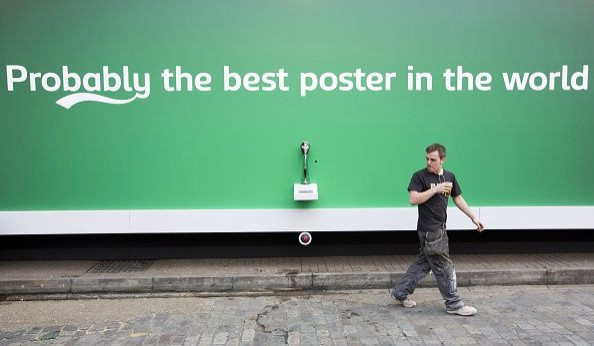Alcohol Advertising Edges Into Middle Schoolers' Lives, Increasing Risk Of Underage Drinking

Underage drinking is a social problem that plagues every generation, and according to the Centers for Disease Control and Prevention, alcohol is the most commonly used and abused drug among American youth. While many may simply write off the behavior as “kids being kids,” research has shown that drinking too young is linked to many serious health issues such as addiction and impaired brain development. And despite best efforts by parents and schools to limit children’s exposure to alcohol, a new study has shown that an alarming number of middle school kids still continue to see several alcohol ads every day.
To fully understand middle school youth’s exposure to alcohol advertising, researchers from the nonprofit RAND Corporation had 589 Los Angeles-area youth between the ages of 11 and 14 record their daily encounters with alcohol advertisements over a 14-day period. The children, who belonged to all ethnic groups and were equal amounts male and female, recorded their alcohol encounters using a hand-held computer device. They were asked to record only alcohol advertising that they naturally encountered rather than attempt to “find” advertisements. Participants were also asked to record how they encountered each advertisement (for example, whether it was on television or on a billboard).
Results showed that on average, kids saw two to four alcohol ads per day, with outdoor advertising accounting for the largest amount. Television was the second most popular way for middle school children to encounter alcohol advertising, and beer was by far the most commonly encountered alcoholic beverage across every advertising venue. Interestingly, girls saw 30 percent more alcohol advertisements than boys did, and minority children of both genders saw twice as many alcohol advertisements than white children.
"The evidence is strong that kids are at greater risk if they're exposed to alcohol advertising," lead researcher Dr. Rebecca L. Collins said in a recent statement.
The study suggests a number of factors could explain the discrepancy between which ads were seen by different genders. First, girls tend to browse more magazines — a popular source of alcohol advertisements — than do boys. Historically, ads for alcohol dominated commercial breaks within televised sporting events to a greater extent than they do today. In addition to this, more girls watch televised sports than in the past.
“It’s possible that girls and minorities just noticed ads more, but that’s unlikely,” Collins told Medical Daily. “Other prior studies show that the same patterns within a specific medium — for example, that girls see more alcohol ads on cable TV, and that more alcohol ads are present in neighborhoods with greater percentages of minority residents.”
Collins and her team hope the findings could have important implications because research has previously suggested that exposure to alcohol advertising increases kids’ risk of underage drinking. For example, one 2015 study found that the alcohol advertising receptivity score, a composite based on how much a child noticed, remembered, and liked an alcohol advertisement, “independently predicted the onset of drinking, the onset of binge drinking, and the onset of hazardous drinking.”
“Just know that kids' decisions to drink don't suddenly come up in college," said Collins. "Young kids are being exposed to alcohol ads all the time, and that can influence them."
While limiting children’s exposure to alcohol advertising is not something that can be accomplished overnight, the study suggests that there are steps we can take to ensure that children understand exactly what it is they are seeing.
"Monitoring children’s television viewing won’t reduce the number of alcohol ads they see, but it is one of the most important things parents can do," explained Collins. "Even if they are only able to watch with their kids occasionally, when parents are present they can point out the alcohol ads, challenge the messages in them... this can help kids to challenge the messages themselves when they’re viewing alone."
Source: Collins RL, Martino SC, Kovalchik SA, et al. Alcohol Advertising Exposure Among Middle School-Age Youth: An Assessment Across All Media and Venues .Journal of Studies on Alcohol and Drugs. 2016



























